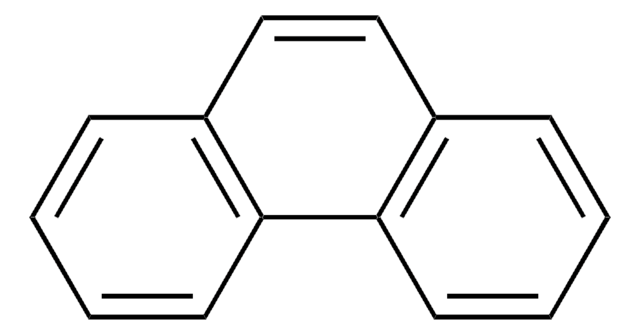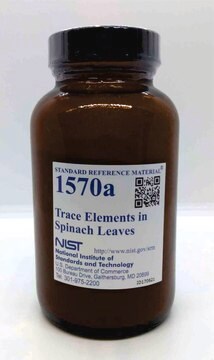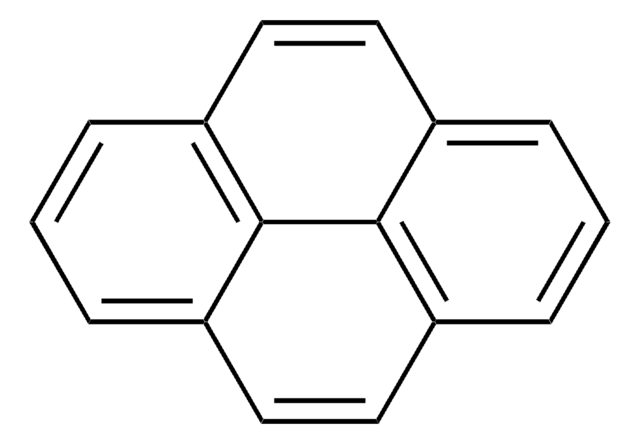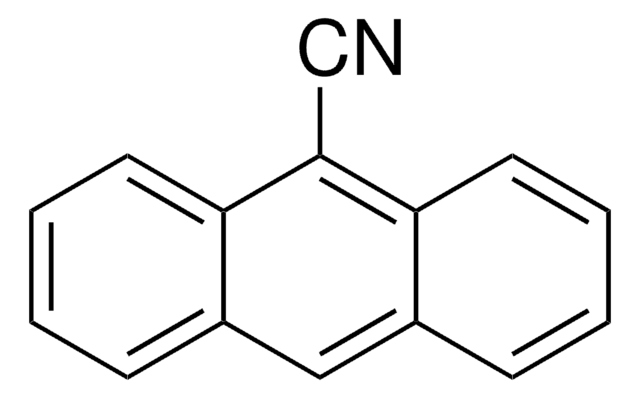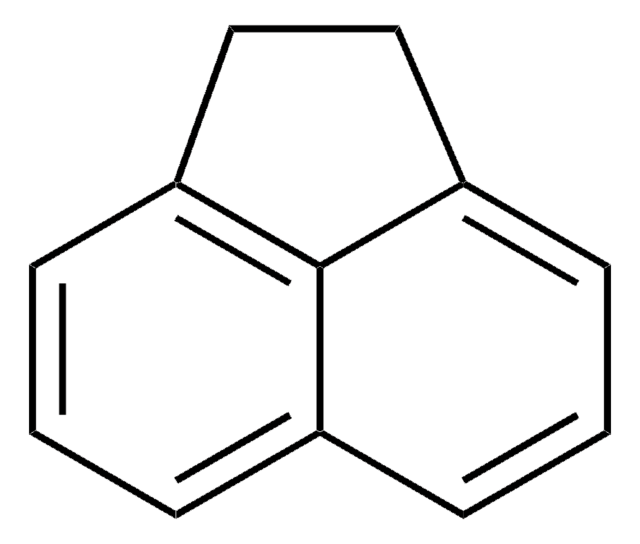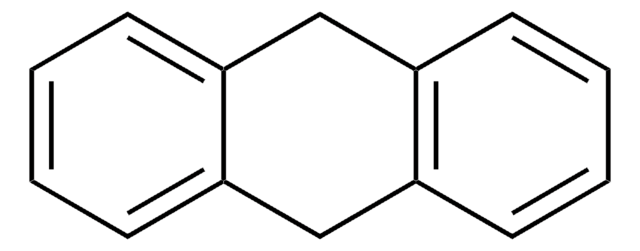141062
Anthracene
ReagentPlus®, 99%
Synonyme(s) :
Anthraxcene, Paranaphthalene
About This Item
Produits recommandés
Densité de vapeur
6.15 (vs air)
Niveau de qualité
Pression de vapeur
1 mmHg ( 145 °C)
Gamme de produits
ReagentPlus®
Essai
99%
Forme
powder or flakes
Température d'inflammation spontanée
1004 °F
Couleur
blue-violet fluorescence
pb
340 °C (lit.)
Pf
210-215 °C (lit.)
Solubilité
toluene: soluble 20 mg/mL, clear, colorless to faintly yellow
alcohols: soluble
benzene: soluble
chloroform: soluble
hydronaphthalenes: soluble
supercritical carbon dioxide: soluble
Chaîne SMILES
c1ccc2cc3ccccc3cc2c1
InChI
1S/C14H10/c1-2-6-12-10-14-8-4-3-7-13(14)9-11(12)5-1/h1-10H
Clé InChI
MWPLVEDNUUSJAV-UHFFFAOYSA-N
Informations sur le gène
human ... CYP1A2(1544)
Vous recherchez des produits similaires ? Visite Guide de comparaison des produits
Description générale
Application
Informations légales
Mention d'avertissement
Warning
Mentions de danger
Conseils de prudence
Classification des risques
Aquatic Acute 1 - Aquatic Chronic 1 - Eye Irrit. 2
Code de la classe de stockage
11 - Combustible Solids
Classe de danger pour l'eau (WGK)
WGK 2
Point d'éclair (°F)
249.8 °F - closed cup
Point d'éclair (°C)
121.0 °C - closed cup
Équipement de protection individuelle
dust mask type N95 (US), Eyeshields, Gloves
Faites votre choix parmi les versions les plus récentes :
Déjà en possession de ce produit ?
Retrouvez la documentation relative aux produits que vous avez récemment achetés dans la Bibliothèque de documents.
Les clients ont également consulté
Notre équipe de scientifiques dispose d'une expérience dans tous les secteurs de la recherche, notamment en sciences de la vie, science des matériaux, synthèse chimique, chromatographie, analyse et dans de nombreux autres domaines..
Contacter notre Service technique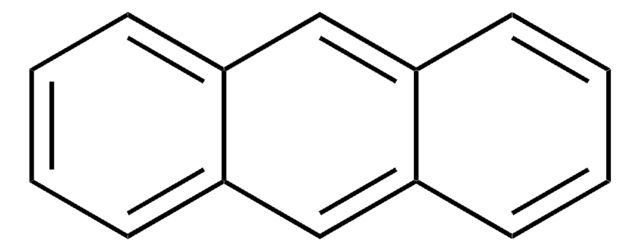
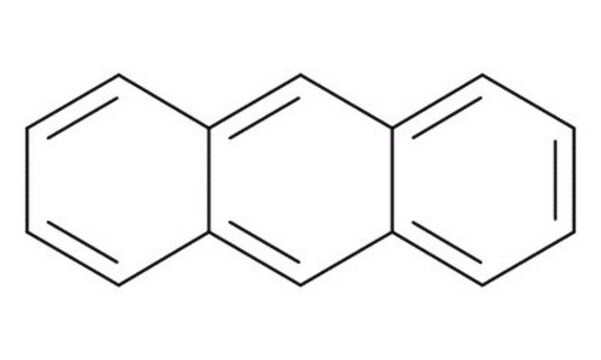
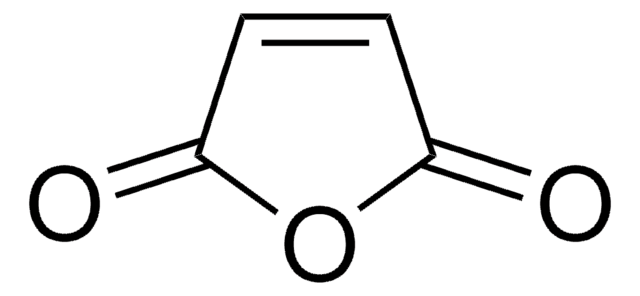
![Benz[b]anthracene 98%](/deepweb/assets/sigmaaldrich/product/structures/197/885/3a015625-5e09-4f15-8b17-4cc285304fc7/640/3a015625-5e09-4f15-8b17-4cc285304fc7.png)
